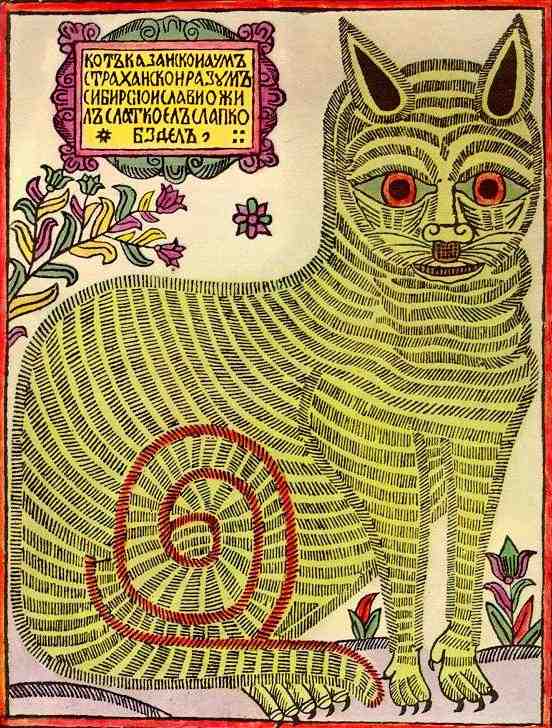Lubok

description
Lubok is a type of graphic folk art with the use of text reflecting “Russian reality”, it was available even to the most bankrupt buyers, and was intended for mass distribution. The art of popular prints was born in China.
Initially, the pictures were printed from linden boards. It was from the linden tree, called in the old days bast (bast is the top hard layer of linden wood), that the word “lubok” appeared.
Manufacturing began with the fact that the artist put the drawing on a smoothly planed polished linden board, cut it out with special tools and covered it with paints. Most often, women and children were engaged in “coloring”. The indentations during printing remained white; under pressure, only the protruding areas passed onto the paper. Originally lubok was black and white on gray material. Later, the linden board is replaced by printing from a smooth stone, which makes the process cheaper and easier. The splint was not of high quality, later only four colors were used, but people appreciated it not for the accuracy of execution and details, but for humor.
There were occasional bans by the church and the police on the production and sale of popular prints (17-19 centuries). Popular prints and calendars were sold in the markets; in the villages they were sold by wandering peddlers. Later, in the 19th century, the production of popular prints acquired factory printing. Despite the short-term public interest, lubok has always been regarded as a “peasant” art, since it was characterized by vulgarity, rudeness, exaggeration, silly amusement, “monstrous” fabulousness, low-comic humor; has no perspective, the method of applying paints called “coloring”.
In addition to local folklore, the theme of popular prints is borrowed from foreign literature, almanacs and calendars. At the end of the 19th century, the religious genre prevailed; they also depicted portraits of the imperial family, thematic and plot pictures (riotous life, debauchery, gluttony, drunkenness, greed). Also thematic sources were articles about curiosities from local newspapers.
In 1914 K. Malevich, D. Burliuk, V. Mayakovsky and A. Lentulov created the group “Today’s Lubok” and issued 22 pages on battle themes.
Popular prints: religious, symbolic, literary, historical, battle, caricature. Techniques: woodcut, honey engraving, lithography. Artistic form: popular prints, popular prints on playing cards, calendars, posters, illustrations for children’s books. The relationship between popular print and comics is traced.
It should be noted that the splint serves as a precious historical source for the study of the spiritual, moral and housing aspects of previous generations.
Key masters: Pamva Berynda, Leonty Zemva, Hieromonk Elijah, Vasily Koren, Viktor Mikhailovich Smeshnikov, I.Ya. Bilibin, V.M. Konashevich, I. D. Sytin, T.A. Mavrina, V. Penzi.
Key works:
Anika the warrior and death. 17th century.
Ilya Muromets and Nightingale the Robber. 18th century.
How mice buried a cat. 18th century.
